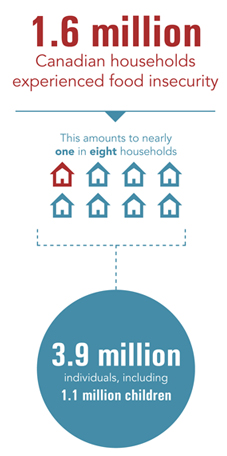A new Homeless Hub blog feature, running usually on Mondays (it will run Tuesdays when there is a holiday or breaking news story) will be our weekly round-up. It’s our attempt at synthesizing and capturing some of our stories from the past week. We’ll share those that seemed to attract the most attention, as well as those that we think were overlooked. As always, follow us on Facebook and Twitter to stay informed on a daily basis.
Here are some highlights (good and bad) from the past week:
- The full State of Homelessness in Canada: 2013 report has been translated into French. The Executive Summary and the infographic are aussi disponsible en français.
- The City of Toronto released the interim results of their 2013 Street Needs Assessment on Wednesday. Watch this space tomorrow for a blog from Michael Shapcott, of the Wellesley Institute, analysing the results. Some key points:
- Outdoor homelessness has increased 24% since 2009 and overall homelessness has increased by 1%.
- 15.6% of the outdoor homeless population claim Canadian military service. This is twice that of the total homeless population (7.2%).
- Nearly 20% of homeless youth identify as a part of the LGBQT community, more than twice the rate for all age groups. 9.5% of the total homeless population identify as being part of the LGBTQ community.
- The share of seniors in the homeless population has more than doubled since 2009. 10% of the homeless population is 61 or older, compared to 4.7% in 2009. A further indication of the aging trend is the fact that those aged 51 and above represent 29.1% of the homeless population, compared to 19.6% four years ago.
- The PROOF report about food insecurity in Canada continues to get a lot of attention. The numbers, while not surprising to those of us in the field, are certainly scary. One of the researchers, Naomi Dachner, wrote a blog for us about the topic that highlights some of the issues. The report received a great deal of media attention as well. In an interview with the Vancouver Sun Valerie Tarasuk said, “In 2007 [Newfoundland’s] household food insecurity rate totalled more than 15 per cent, and now it touts the lowest rate in the country at just over 10 per cent. They're the only province that has shown a steady decline." CBC New Brunswick also has a great summary video about the report.
- In related news, the Canadian Medical Association released a report on Tuesday “Health Care in Canada: What Makes Us Sick?” This report based on a series of town halls with more than 1000 participants found that poverty was the main issue affecting health inequality in the country.
- We released five research summaries on Monday related to Hepatitis in recognition of World Hepatitis Day on July 28th. An interesting stat: Homeless people in Toronto are 29 times more likely to have Hepatitis C. The five research summaries were further summarized in a blog written by Faculty of Environmental Studies MES student Isaac Coplan. The one that seemed to get the most traction was “The Tragedy of Dying Homeless.” This study found that:
- Deaths among homeless people occur at higher than average rates.
- There are higher rates of AIDS, cancer and Hepatitis amongst the homeless population.Homeless people often face barriers to healthcare treatment including poverty, substance us, lack of a phone, address and transportation.
- The Wellesley Institute also released a health-related report, “Rising Inequality, Declining Health: Health Outcomes and the Working Poor”. This research found that there is a strong correlation between health, income and employment. Those who are better off financially and more job secure have better health overall.


